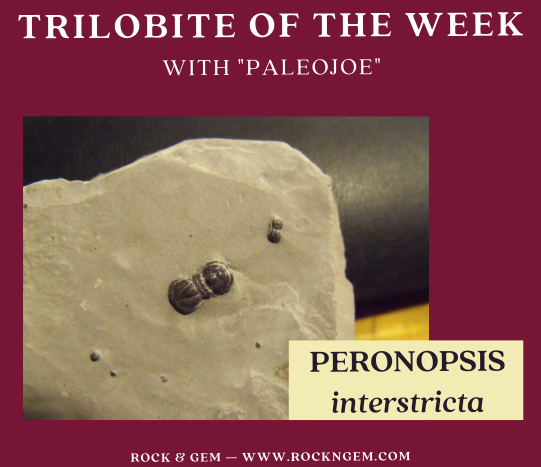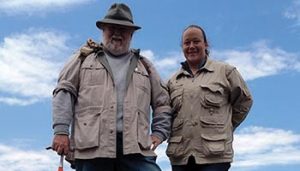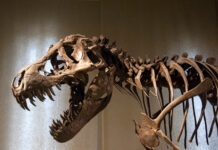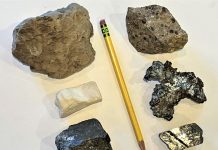
By Joseph “PaleoJoe” Kchodl
The PERONOPSIS interstricta were small, blind trilobites that were isopygious, meaning the head section and the tail section were roughly the same size. In fact, at first glance, one cannot determine which end is the front and which is the back.
The cephalon and pygidium were roughly identical. The thorax was comprised of two body segments. It was able to enroll, or actually fold over to make a tight clam-shaped ball protecting itself from danger. It lived in relatively deep water.
Caches of PERONOPSIS are frequently found containing dozens of individual specimens. They can have a reddish exoskeleton or black exoskeleton, as shown here.
There are many species of PERONOPSIS located all over the United States and the world. They are discovered in great abundance in the House Range of Millard County, Utah.
DID YOU KNOW: Trilobites, an extinct form of arthropod related to insects, crabs, crayfish, and horseshoe crabs, are among the most prevalent invertebrates with hard body parts to appear during the Cambrian Period. These creatures are called trilobite due to the three distinct “lobes” running vertically through the body section.

About the columnist: Joseph “PaleoJoe” Kchodl is a paleontologist, educator, veteran, author, fossil dig organizer/guide, business owner, husband, father, and grandfather, and fossil fanatic. For decades, he’s spent hours in classrooms around the Midwestern United States and beyond, speaking to school children about fossils and fossil hunting. Visit his site to purchase fossils, contact PaleoJoe, visit www.paleojoe.com.
Plus, learn more about PaleoJoe and his daughter PaleoJen and their paleontology exploration partnership in an the article “Fueling a Passion for Paleontology“.
If you enjoyed what you’ve read here we invite you to consider signing up for the FREE Rock & Gem weekly newsletter. Learn more>>>
In addition, we invite you to consider subscribing to Rock & Gem magazine. The cost for a one-year U.S. subscription (12 issues) is $29.95. Learn more >>>
















